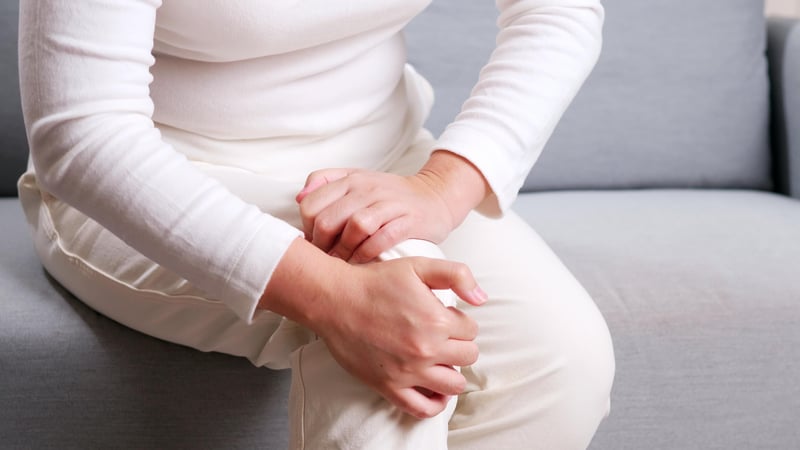Get Healthy!

- Posted January 24, 2023
Even Light Exercise Can Help Arthritic Knees
Even short bouts of light exercise can help the millions of people with knee osteoarthritis reduce pain and improve their range of motion.
Knee osteoarthritis, the wear-and-tear form of the disease, occurs when the cartilage between your bones breaks down, causing pain, stiffness and swelling.
Researchers in a new study compared high-dose and low-dose exercise in 189 people with knee osteoarthritis. Everyone exercised three times a week for 12 weeks. Exercises included indoor cycling and various lower body exercises such as de-loaded squats and knee extensions. De-loaded exercises use bands or pulleys to take weight off the knee joint and minimize pain.
Folks in the high-dose group performed 11 exercises in 60- to 90-minute sessions. Folks in the low-dose exercise group performed five exercises during 20- to 30-minute sessions.
The result? Everyone showed improvements on a standard scale measuring knee osteoarthrosis pain and function at three, six and 12 months. People in the high-dose group did show greater improvements in knee function during sports and recreation at six months, suggesting that a high-dose program may be better for athletes and weekend warriors.
The study, led by Wilhelmus Johannes Andreas Grooten, a physiotherapist at the Karolinska Institute in Stockholm, was published Jan. 24 online in the Annals of Internal Medicine.
Outside experts are quick to point out that the best exercise plan for someone with knee osteoarthritis should fit in with their lifestyle, goals and capabilities.
Jack Fitzgerald is a physical therapist at the Hospital for Special Surgery in New York City. He routinely designs and implements exercise plans for people with knee osteoarthritis.
Calling the new study results "music to any physical therapist's ears," Fitzgerald pointed out that participants in the study showed meaningful improvements in knee symptoms and that adherence to their program was excellent across both groups.
This is at least partially due to the fact that exercise was prescribed on a minimal/no pain basis, Fitzgerald said.
"Regardless of the exercise dosage, when we are capable of prescribing exercise within pain-free limits, there is more hope that patients will respond well to the treatment," he said.
"If you are prescribing exercises for these patients with their best interest in mind, the program should be specific to the likes and goals of the patient keeping in mind loading principles to manage pain," Fitzgerald added.
Exercise is an essential part of knee osteoarthritis treatment, said Dr. Sonali Khandelwal, an associate professor of internal medicine at Rush Medical College in Chicago.
"A component of knee osteoarthritis is weakening of the muscles surrounding the knee, and exercise strengthens these supporting muscles," she said.
Many people worry that exercise will make knee OA worse, but this isn't true, Khandelwal said.
"It's important to assess a person's risk of falls and history of exercise when prescribing a plan," she said. "For people who have never done any exercise, just moving and walking tends to go a long way."
Conservative measures such as physical therapy and exercise are first-line treatments for knee osteoarthritis pain, Khandelwal said. Next up are steroid or hyaluronic gel injections and pain-relieving medication like non-steroidal anti-inflammatory drugs or acetaminophen.
"When conservative measures don't work, pain is a 10 out of 10, and you can't perform activities of daily living, surgery can be considered," she said.
"It's great to see studies like this as surgery results don't last forever," Khandelwal said.
Dr. David Pisetsky, a professor of medicine at Duke University School of Medicine in Durham, N.C., agreed.
"For people with knee osteoarthritis, activity is important to maintain strength and range of motion," he said. "Exercise should be easy to perform "¦ walking is a good way to go."
Other options include swimming, riding a stationary bicycle, and exercising with light weights.
More information
The Arthritis Foundation provides more on knee osteoarthritis, including its causes and treatments.
SOURCES: Jack Fitzgerald, DPT, physical therapist, Hospital for Special Surgery, New York City; Sonali Khandelwal, MD, associate professor, internal medicine, Rush Medical College, Chicago; David Pisetsky, MD, PhD, professor, medicine, Duke University School of Medicine, Durham, N.C; Annals of Internal Medicine, Jan. 24, 2023



